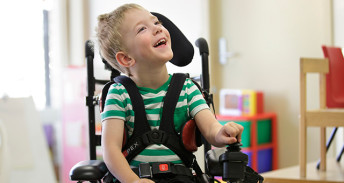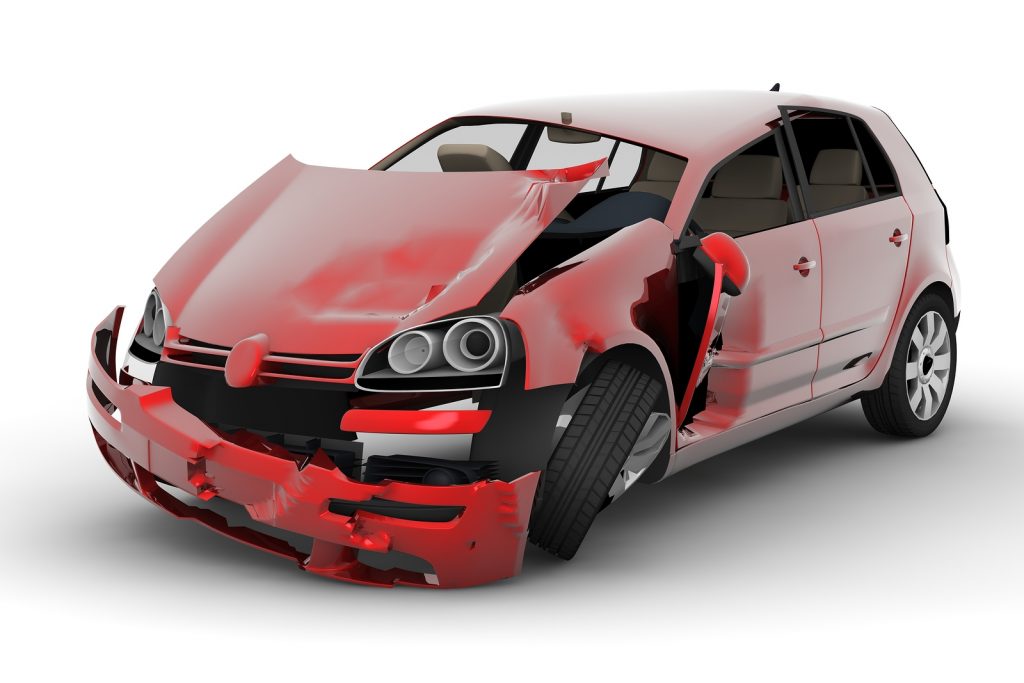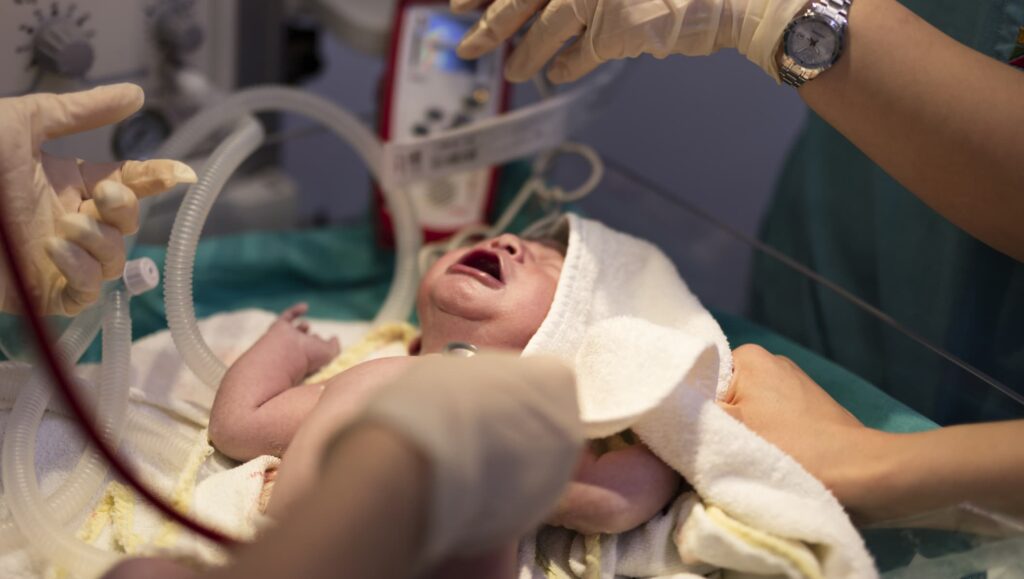Medical Malpractice as a cause of Cerebral Palsy
(by John McKiggan Q.C.)
According to the Ontario Federation for Cerebral Palsy over sixty-thousand (60,000) Canadians are currently living with Cerebral Palsy (CP). CP affects between 1 in 500 to 1 in 1000 newborns every year. In Nova Scotia, more than 8,000 babies are delivered every year. So that means 8 to 16 children are born every year in Nova Scotia who will have to face the challenges of living with cerebral palsy. The unfortunate fact is that many of these injuries could have been prevented with proper medical care.
“Your baby has Cerebral Palsy….”As medical malpractice and brain injury lawyer we have had many calls from parents who have received the devastating news that their baby has been diagnosed with Cerebral Palsy. Usually the parents that call us are frightened or confused and they have lots of questions and are looking for answers. In many cases parents are told there was nothing that could have been done to predict or prevent their baby from having CP. But that is not always the case.
I wrote this article to answer the common questions parents have when they find out their baby has CP and to explain when a parent should be concerned about whether medical malpractice was a possible cause of their child’s Cerebral Palsy.
What is Cerebral Palsy?
Image courtesy of https://research.cerebralpalsy.org.au/about-cerebral-palsy/
Cerebral Palsy (“CP”) is a non-contagious brain condition that causes physical disabilities. Sometimes it may also cause cognitive deficits (mental disabilities).The term “Cerebral Palsy” literally means “a lack of muscle control caused by the brain.” The condition can range in severity from near total muscle control impairment that seriously restricts movement to only slight impairment that may cause some deficits in fine motor control.
Are there different types of Cerebral Palsy?
Yes, there are five different classifications of CP, depending on the area of the brain effected or the way in which the muscles are effected.
- Spastic Cerebral Palsy: This is the most common form of the condition (occurs in about 80% of CP cases). It is caused by damage to the motor cortex of the brain. Movements of people afflicted with Spastic CP are jerky and limited.
- Dyskinetic Cerebral Palsy: This form of CP happens when there is damage to the motor system and the basal ganglia. People with dyskinetic CP may have problems with posture and often have involuntary movements.
- Ataxic Cerebral Palsy: Is caused by damage to the cerebellum, which is responsible for muscle coordination. Motor skills are usually the most effected.
- Hypotonic Cerebral Palsy: This type of CP is also caused by damage to the cerebellum. But it results in “floppy” or over-relaxed muscles.
- Mixed Cerebral Palsy: As the name implies, this form of CP occurs when the parts of the brain controlling both muscle tone and movement are affected.
What causes Cerebral Palsy?
There are many potential causes of CP. Some can be predicted and prevented, some cannot. It is the cases where the condition could (or should) have been predicted and prevented that give rise to Cerebral Palsy medical malpractice claims. Cerebral Palsy is caused by damage to the parts of the brain responsible for motor control, before they are fully developed. Essentially, any damage to a developing brain can result in CP. The damage can happen before, during or shortly after birth.
- Before Birth: During pregnancy damage can be caused by anything that would result in a low birth weight. These would include: twins/triplets, poor nutrition, infections in the womb, a damaged placenta, exposure to drugs or nicotine or alcohol, diabetes or high blood pressure, or genetic disorders.
- During Labour and Delivery: During labour and delivery, a baby’s brain can be injured by any condition or circumstance that results in: premature delivery, unusual positioning of the baby – making delivery difficult, or damage to the amniotic membranes leading to fetal infection. Oxygen deprivation causing Hypoxic Ischemic Encephalopathy is a common cause of Cerebral Palsy in newborns.
- After Birth: After your baby is born injuries sufficient to cause CP can result from: bad infections (such as meningitis), brain hemorrhages, serious head injuries, lack of oxygen (asphyxia), or seizures.
Medical malpractice claims for Cerebral Palsy typically involve circumstances where the hospital, nurses of doctors fail to properly manage the mothers delivery or fail to identify and respond to conditions that put the baby’s fetal health at risk.
How do I know if my baby is at risk of CP?
There are certain risk factors that scientists have identified that are associated with an increasd risk of developing CP. The risk factors include:
- During pregnancy: Contracting chickenpox, syphilis, thyroid problems, or exposure to toxins such as mercury.
- During birth: Anything that results in low weight births or difficult births, for example; twins/triples or breech births. Anything that results in oxygen deprivation to the baby, like shoulder dystocia or umbilical cord problems. As I have already indicated, the question of whether the medical professionals properly identified and responded to these types of medical emergencies is a common issue in Cerebral Palsy medical malpractice lawsuits.
- During infancy: In the first few months of life, CP can be caused by severe jaundice or viral encephalitis. Anything that can result in oxygen deprivation at an early age, e.g.: near-drowning is a potential cause of CP.
Are there any tests for Cerebral Palsy?
CP can be difficult to diagnose, particularly for milder cases. The average age of diagnosis comes at around eighteen (18) months. In order to confirm the diagnosis, doctors will conduct reflex tests, check muscle tone and posture and test coordination. They will also likely consult MRIs and CT scans of the brain to check for any noticeable brain injury.
Is there a cure for CP?
Unfortunately, at the moment CP is not curable. However, there are efforts that can be made to ease the challenges of CP and make the condition more manageable.
Rehabilitation and Treatment
The cost of caring for a child with CP can be enormous. There are a number of medical and health professionals who are typicaly involved in assisting children with CP.
- Physical Therapists: Physical therapy can help with physical movements and mobility. Physical therapists can help teach people with CP how to best use a wheelchair or a walker, etc.
- Occupational Therapists: Occupational therapy assists people with CP in doing activities requiring fine motor skills. The use of occupational therapy can help increase the independence of people with CP.
- Other Therapy: There are other types of therapy that can be particularly useful depending on the specific afflictions of the person with CP – for example, music therapy might be effective for managing behavioural disorders.
- Medical Aids: Various types of orthotics, casts or splints can be used to assist CP patients with their movement.
- Medication: There are some medications that may be recommended depending on the type of CP suffered. Pain-killers are used to treat painful spasms or other physically painful effects of CP. Seizure medication may be prescribed for CP patients who are prone to seizures. A recent development in CP treatment involves injecting Botox into spastic muscles, which can make management much easier.
- Surgical Procedures: CP patients can undergo surgery to help to lengthen tendons to make movement easier. Neurosurgery can also be done to reduce spasticity by severing certain nerve roots.
- Mobility and Communication Aids: The use of mobility equipment like wheelchairs or scooters can make it easier for a CP sufferer to move around. Communication tools such as voice synthesizers and head sticks for computers can make it easier for a person with CP to interact with others. Finally, other simple tools can make day-to-day tasks more manageable, for example large eating utensils or electric door openers.
This list isn’t exhaustive, as you can imagine the lifeftime cost of rehabilitation and assistive aids to help CP sufferers lead a more comfortable life commonly runs into the millions of dollars. The nature and extent and cost of the medical and rehabilitative aids required by someone with CP is a common issue in medical malpractice lawsuits over Cerebral Palsy.
Cerebral Palsy is Preventable!
In many cases CP is caused by circumstances or conditions beyond anyone’s control. But in some instances of cerebral palsy are caused by injury to the brain during labour and delivery that could have been prevented by proper medical care and attention.These types of birth injuries can happen when nurses or doctors:
- Fail to diagnose and treat a maternal infection;
- Do not recognize or promptly respond to signs of fetal distress;
- Fail to perform an emergency C-section in a timely manner;
- Do not treat jaundice in a newborn infant;
- Fail to ensure that the fetus has an adequate supply of oxygen;
- Do not properly identify or manage shoulder dystocia;
- Do not properly manage delivery using vacuum extraction or forceps.
The most important thing for parents to know is that the risks of CP can be identified and managed. The chances of your baby suffering an injury that can cause CP can be reduced or eliminated.
Have any questions?
If you have any questions, or would like more information about medical malpractice claims for cerebral palsy, you can call us toll free at (877) 423-2050 or contact us for a free copy of our public legal education guide: Health Scare: The Consumer’s Guide to Medical Malpractice Claims in Canada.












